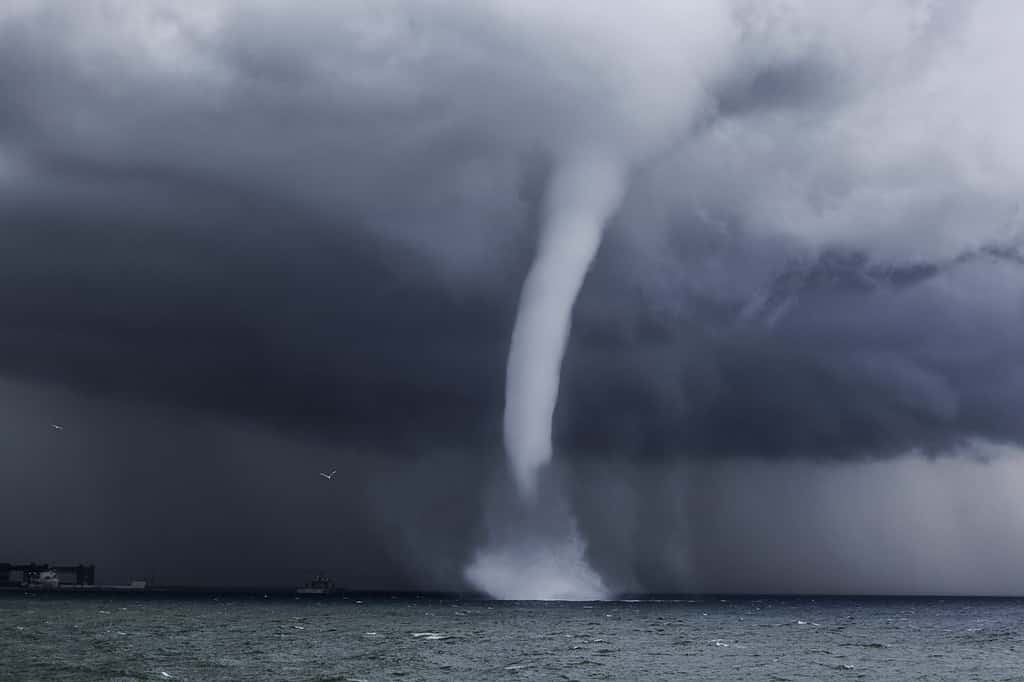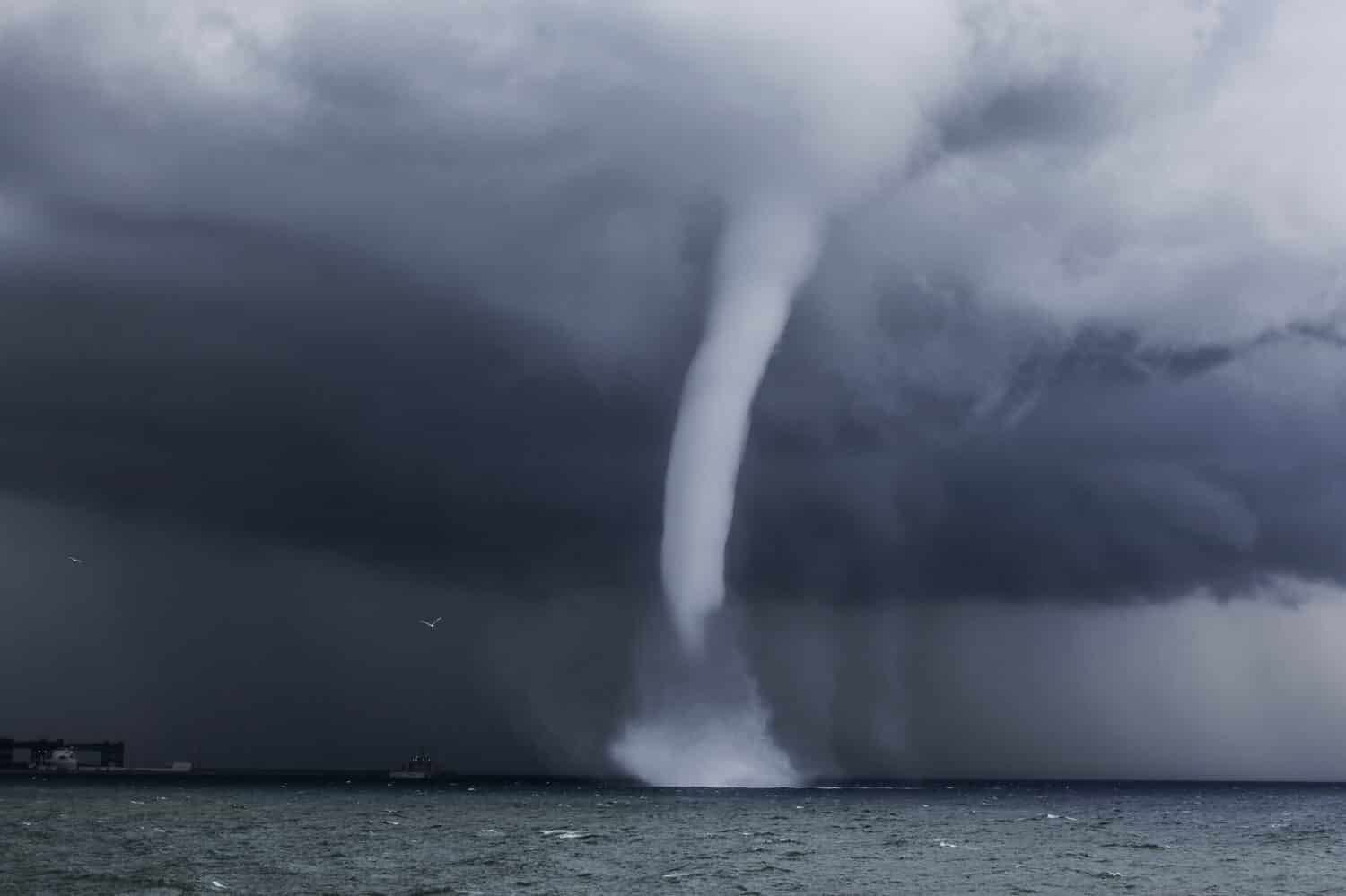Lake Michigan is one of the biggest lakes in the world, and when lakes get to a certain size, they start acting a little differently. Recently, meteorologists are warning people of the potential for dangerous waterspouts (sometimes called vortexes) flying across the lake. Are they actually dangerous, and what causes these waterspout spectacles to form? Let’s look at this breaking news and if lake-goers should be worried about these tornadoes on the water!
Danger Over Lake Michigan
Lake Michigan will likely be seeing some extremely unique weather patterns over the next few months, and some of them are particularly dangerous. If you happen to look out and see something that looks like a tornado sweeping across the water, you aren’t losing your mind; it’s just a waterspout! Waterspouts are vortexes of water that shoot into the air and only happen during certain specific weather conditions (which we will talk about later).
Heading into August, September, and October, these weather patterns become more likely. Recently, a few video clips of waterspouts caused a bit of panic online, however, and the scientists have just started responding:
“We are just in the perfect spot to be seeing waterspouts today because the offshore low-pressure system is causing air to move together and upward, or what is called low-level convergence,”
Taylor Patterson – NWS
What Causes Waterspouts to Form?

Waterspouts are created from unique conditions in bodies of water: warm surface temperatures and rapidly cooling air temperatures.
©Minerva Studio/Shutterstock.com
To have the ideal condition for a waterspout, you’ll need a specific set of meteorological ingredients. First, you need a body of water, like Lake Michigan, and unique atmospheric conditions. One major factor is the presence of cooler air running across the lake’s surface. When this cooler air interacts with the relatively warmer waters of Lake Michigan, it sets off a process that leads to the upward movement of air. This upward motion is a critical ingredient in the recipe for waterspouts.
So, why does Lake Michigan seem to be a hotspot for waterspouts? The lake’s geography and climate play a significant role. Essentially, the large body of water is still somewhat warm from the summer, but cooler winds from the north start sweeping in before the water is done cooling off. This discrepancy creates the waterspout’s initial states, eventually resulting in an upward lift. You get a recipe for waterspouts when you combine the cooler air and warm water with a lake as large as Lake Michigan.
Are Waterspouts Dangerous?

If you’re heading out to Lake Michigan soon, keeping your eyes on the horizon for potential waterspouts is worth it.
©iStock.com/Laurent Fady
Waterspouts may be a cool thing to see, but they also come with a measure of danger. Understanding the risks associated with waterspouts is important for anyone venturing onto (or near) Lake Michigan.
Waterspouts bear a look identical to their terrestrial cousins, tornadoes. Both share similar visual structures and even creation mechanisms, with their main difference being location; waterspouts happen over water, while tornadoes occur on land. This similarity can guide us as to which people are in danger when a waterspout is on the horizon.
For boaters, waterspouts can be truly threatening. Depending on their size and intensity, they can have a range of effects (especially when you consider the size of a boat). Smaller waterspouts may be more of a visual spectacle than a danger, but larger ones can be hazardous. They have the potential to flip or flood some boats, so you should absolutely avoid them.
One of the challenging aspects of waterspouts is their unpredictability. While meteorologists can provide forecasts and warnings, the exact behavior of a waterspout can be hard to calculate. This unpredictability means that, in general, it’s best to avoid them if possible. If you’re on land, things aren’t too hazardous, but finding shelter is always a good thing to do. Running from the spout at a 90-degree angle is recommended if you’re in the water.
A Few More Months of Waterspouts
Be on the lookout for Waterspouts on Lake Michigan today. Waterspouts will be possible with the scattered showers and storms over the Lake. #wiwx #LakeMichigan pic.twitter.com/wfe9XMaWCR
— NWS Milwaukee (@NWSMilwaukee) September 13, 2023
The meteorological conditions that give rise to waterspouts are closely tied to temperature and wind patterns over Lake Michigan. During late summer and early fall, the lake’s surface temperatures are still relatively warm from the summer months. At the same time, the surrounding air begins to cool more rapidly as fall approaches. This temperature differential between the water and the air creates the ideal conditions for waterspout formation.
As cooler air masses start to interact with the warmer waters of Lake Michigan, they set in motion the process that can lead to waterspouts. Researchers say that the period between August and October is their peak season, so if you plan on being in the area, keep a vigilant eye!
Thank you for reading! Have some feedback for us? Contact the AZ Animals editorial team.








